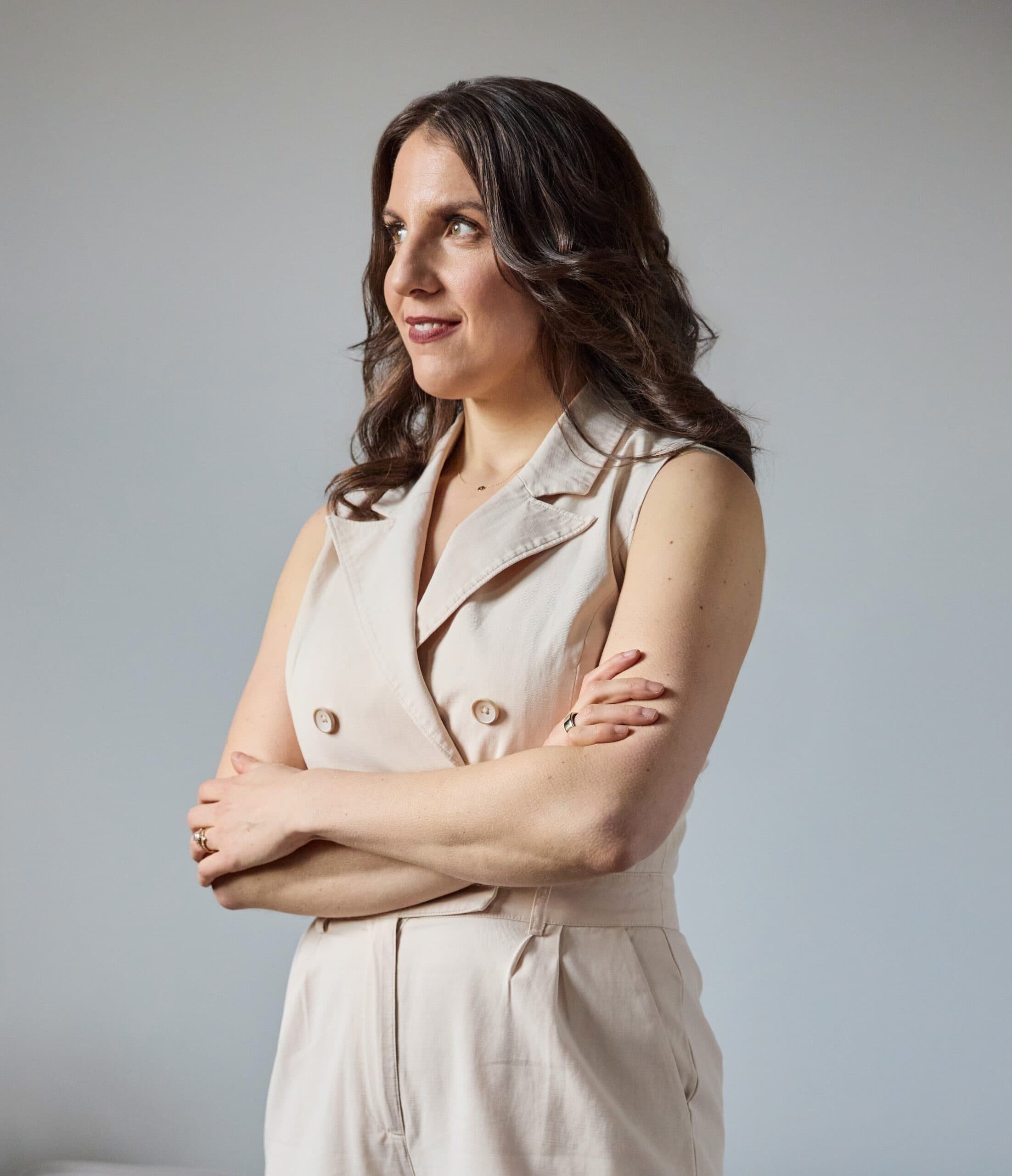Stop overanalyzing at work. It’s holding you back. Let’s talk about how to spot overanalyzing and three ways to make it stop.
Overanalyzing usually looks like a pained face with an internal circular monologue going around and around on your options.
If this sounds familiar, know that you’re definitely not alone. Research shows that over 73% of people struggle with overthinking, which happens when your thought process becomes too complex and you get trapped in your own head.
In my LinkedIn Learning course, Overcome Overthinking, I share strategies to feel more confident, become less stressed, and improve your problem-solving skills so you can stop this habit of overthinking and bring more ease into your work day.
Here are a few of my favorite techniques to curb overthinking and make better decisions, faster. Watch the full course for more.
3 Techniques to Use When You Spot Overanalyzing
1. Focus on “Satisficing”
“Satisficing” is a term that refers to finding the happy medium of satisfying and sufficing. “Satisficers” prioritize the “good enough” solution – one that meets key needs. Compare this to “maximizers,” who examine every option and keep searching for better alternatives, deals, or outcomes – to their own detriment.
Of the two decision-making types, maximizers are more prone to overthinking, less likely to feel happy with the results of their decisions, and more likely to negatively compare themselves to others.
In order to leverage “satisficing”, it’s important to know what you’re optimizing for. That’s where key decision criteria come in. Key decision criteria – principles, guidelines, or requirements – help you prioritize the most important variables weighing into a decision. Your decision criteria can be professional or personal.
For example, let’s say you’re overthinking whether or not to launch a new feature for your product or service. Your decision criteria could include:
- Cost
- Profitability
- Effort
- Risk level
- Impact on customers
Now let’s say, you’re trying to make a personal decision, like whether to move for a new job. You might consider criteria like:
- How well the role fits your strengths
- The convenience
- Long-term earning potential (salary)
- Whether you’ll acquire skills you want to learn
- If the role aligns with your career goals
2. Create Positive Constraints
Have you ever given yourself one month to work on a project—and it took you the full month to finish? Then later on, for the same task, you only had seven days, and yet, you finished the task in just one week. Weird, right?
This happens because overthinking expands to the time we allow it. This is exactly why there is great power in creating constraints and accountability so that you don’t delay or agonize over choices.
In fact, the Association of Talent Development finds that your likelihood of success increases up to 95% by simply making a commitment to do something or by sharing it with someone else.
Creating external limits disciplines your brain into taking action and taking less time to mull things over.
One way you can do this is by time boxing how long you spend on a task. Many of my coaching clients also like the Pomodoro technique. This involves setting a timer for 25 minutes, working until the bell rings, and then taking a 5-minute break. After four sessions, you’ve earned a 15-minute break.
You can also limit the resources you consult is another way to short-circuit overthinking. Determine the number of subject matter experts you’ll speak to or create a shortlist of credible websites to reference, for instance.
Giving yourself a deadline also helps. Pick a date or time by which you’ll make a choice. Put it in your calendar, set a reminder on your phone, or better yet – contact the person who is waiting for your decision and let them know when they can expect to hear from you.
Committing to a deadline publicly in a meeting or via email is one of the best ways to ensure you follow through.
You can also recruit the help of others by scheduling a chat with a coworker, your manager, a mentor, or friend if you find yourself stuck in thought. This will prompt you to organize and synthesize the information that’s been bouncing around your head in a clear, concise way.
3. Listen to Your Gut
A hunch, an instinct, a deeper knowing. There are many names for gut feelings. A gut feeling is the ability to immediately understand something without conscious reasoning. In other words, answers and solutions come to you, but you may not be aware of exactly why or how.
In the age of big data, trusting your gut often gets a bad rap. Intuition — the term used to refer to gut feelings in research — is frequently dismissed as mystical or unreliable. While it’s true that intuition can be fallible, studies show that pairing gut feelings with analytical thinking helps you make better, faster, and more accurate decisions and gives you more confidence in your choices than relying on intellect alone. This is especially true when you’re overthinking or when there is no single clear-cut, “correct” option.
In fact, surveys of top executives show that a majority of leaders leverage feelings and experience when handling crises. Even the U.S. Navy has invested millions of dollars into helping sailors and Marines refine their sixth sense, precisely because intuition can supersede intellect in high-stakes situations like the battlefield.
Even if you’ve been taught to devalue your gut feelings, the good news is that intuition is like a muscle. It can be strengthened with intentional practice.
A great place to start is by making minor decisions. Choose an outfit that calls to you without weighing too many variables. Raise your hand and speak up in a meeting without censoring yourself. Taking quick, decisive actions with small consequences gets you comfortable using your intuition.
By starting small, you mitigate feelings of overwhelm and can gradually step your way up to larger, higher-pressure decisions with greater self-trust. This approach is effective because it builds your distress tolerance, or your ability to emotionally regulate in the face of discomfort.
Overcome Overthinking
Overthinking can feel like an overwhelming problem to solve. Check out my LinkedIn Learning course, Overcome Overthinking, for even more tools and strategies to get out of your head so you can be calmer, happier, and overall become more productive.
This course will show you how to:
- Stop worrying about things you can’t control
- Make better, faster decisions with less stress
- Build your confidence instead of dwelling on your shortcomings
- Conquer fear and take braver action in your career
Let go of overthinking from Overcome Overthinking by Melody Wilding, LMSW




